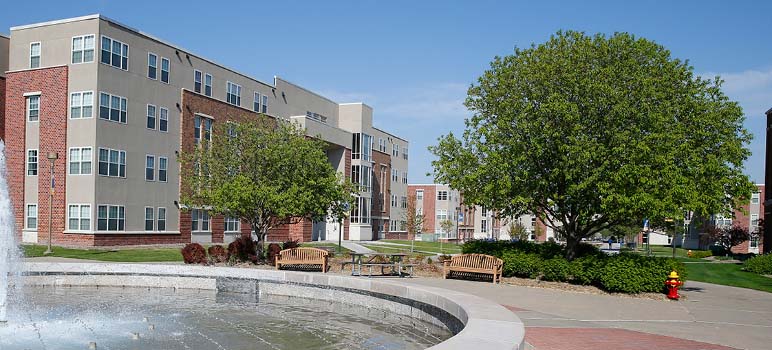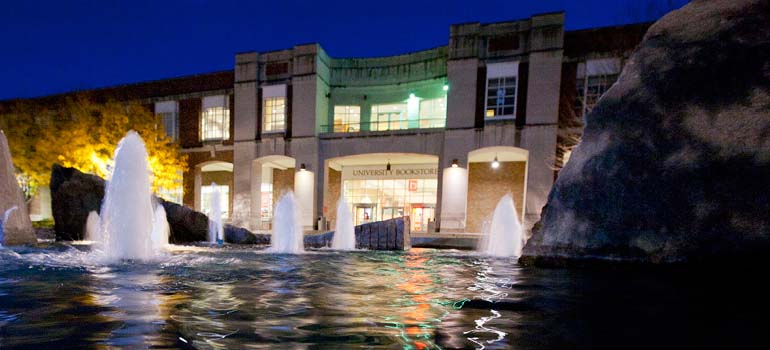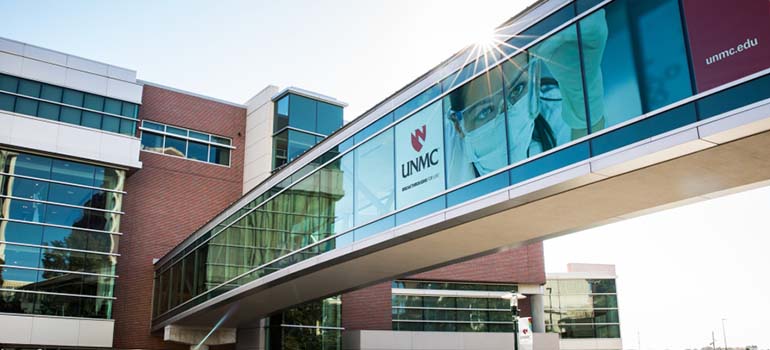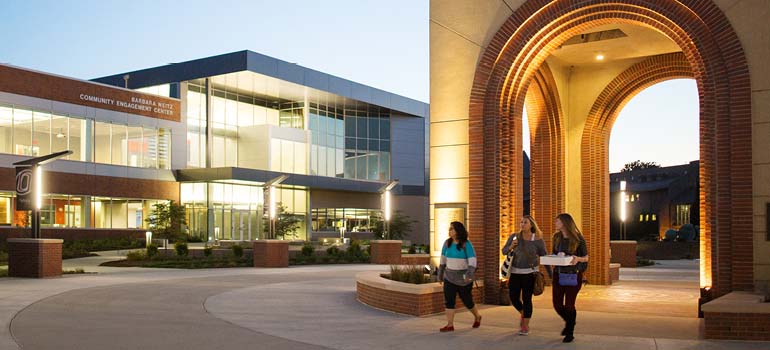About the University of Nebraska System
The University of Nebraska is the state’s only public university system, made up of four campuses—a land-grant flagship campus, an academic medical center, a metropolitan campus serving our urban citizens and a campus focused on undergraduates—that together enroll nearly 50,000 students and employ 16,000 faculty and staff.
The University of Nebraska is also home to three interdisciplinary, university-wide institutes focused on areas in which the University and our state has unique strengths: water and food security, national security and early childhood education.
UNIVERSITY OF NEBRASKA AT KEARNEY
The mission of the University of Nebraska at Kearney is to be one of the nation’s premier undergraduate institutions, with top-tier graduate education, scholarship and public service. UNK offers over 6,000 students these opportunities in an environment that gives them a private school feel, but on a major state university campus. It’s the type of place where the administration, staff and faculty know students by name. UNK has pledged to provide students four things:
- Quality academics paired with hands-on learning opportunities
- Premier education, that’s affordable
- An administration, staff and faculty who care for their students
- A vibrant and involved community
As the educational hub for Greater Nebraska, UNK offers 121 undergraduate majors, 21 pre-professional programs, 54 graduate programs and 11 certificates. The campus is a model for undergraduate research, with over 30% of UNK students doing research outside of the classroom and presenting their work at academic conferences. Nearly 75% of full-time faculty have the highest degrees in their fields. UNK extends world-class education to Greater Nebraska and serves its community with economic support while preparing students to enter the workforce.
The University of Nebraska at Kearney was originally founded by the Nebraska Legislature in 1903 as a “normal school,” referring to schools that trained high school graduates to become teachers. From 1921 to 1962 the college served as the Nebraska State Teachers College at Kearney. In 1963 it joined the Nebraska State College System as Kearney State College, and officially entered the University of Nebraska System in 1991.

UNIVERSITY OF NEBRASKA–LINCOLN
The University of Nebraska–Lincoln was chartered in 1869 as a land-grant university to create opportunity for the state of Nebraska. From its beginning, UNL has been a leader in higher education. It was one of the first institutions west of the Mississippi River to award doctoral degrees and took an early institutional interest in literature and the arts. It established the world’s first undergraduate psychology laboratory and is the birthplace for the discipline of ecology.
Today, UNL is the flagship campus of the University of Nebraska System, serving Nebraska citizens through education, research and outreach. UNL is a proud member of the Big Ten Conference, the Big Ten Academic Alliance, and the Association of Public and Land-grant Universities (APLU). It is classified within the Carnegie “R1: Doctoral Universities – Highest Research Activity” category. The university is accredited by the Higher Learning Commission. UNL consistently ranks in the top tier of national research universities. In fact, it is ranked near the top third of all national universities, both public and private. In recent years, UNL has been ranked highly for value, graduation rate and access.
Home to over 23,000 students, UNL prepares students to join the ranks of legendary alumni, including investing mogul Warren Buffett, comedian Johnny Carson and author Willa Cather. Through continuing to fulfill its three primary missions of teaching, research and service, UNL is building on the legacy set by its alumni—while also preparing current and future generations of students.

UNIVERSITY OF NEBRASKA MEDICAL CENTER
The University of Nebraska Medical Center was founded in 1869 and chartered as the state’s first medical college in 1881. UNMC became part of the University of Nebraska in 1902. What began as the state’s first medical college expanded and grew to into six colleges, which today train more health professionals than any other institution in the state. UNMC’s six colleges and two institutes, in partnership with Nebraska Medicine, not only educate future health care providers, but generate an annual economic impact of $7.7 billion for the state of Nebraska. In total, UNMC serves more than 4,700 students in about 100 programs. Approximately half of Nebraska’s physicians, dental professionals, pharmacists, bachelor-prepared nurses and allied health professionals have graduated from UNMC.
As Nebraska’s only public academic health science center, UNMC not only serves the people of Nebraska, but discovers cures and treatments for global diseases and provides world-class treatment for patients from around the world. UNMC holds high its responsibility to provide services for those in the global community. It has upheld this duty in multiple ways, such as combatting deadly Ebola outbreaks in West Africa and building a cutting-edge cancer research center that will benefit the entire nation.
Simultaneously, UNMC works effortlessly to reach out to all Nebraskans. Through health clinics, distance education, cancer screenings, and more, UNMC reaches out across Nebraska to eliminate health care disparities, including the shortage of health care providers and services available in rural areas. UNMC is consistent in upholding its mission of creating a healthier future for all people and communities through education, groundbreaking research and exceptional patient care.

UNIVERSITY OF NEBRASKA AT OMAHA
The University of Nebraska at Omaha is fueled by its historical ties to Omaha. UNO was originally founded in 1908 by the Presbyterian Theological Seminary of Omaha. As the first municipal university in Omaha, the early founders’ goal was to make higher education accessible and affordable for the city’s residents. In 1968, the campus joined the University of Nebraska System, and today has the unique role of serving as the state’s metropolitan campus.
Accessibility remains a top priority in UNO’s mission and vision. Today, the campus is known for its student-centered environment, its community engagement and its dedication to embracing students from all backgrounds. The campus has built strong partnerships with local business, education, government, arts and civic organizations in the city. UNO, while large enough to provide students with global opportunities, thrives on its personal and close-knit campus culture, where students come first and partnerships with the community grow every day. As both a Metropolitan University of distinction and a Carnegie Doctoral Research institution, UNO transforms and improves the quality of life locally, nationally, and globally.
UNO has been consistently ranked among the top public institutions in the nation for military friendliness by Military Times—currently ranked number one in the nation. UNO’s tuition and fees are among the lowest of Nebraska’s four-year institutions—and one of the most competitively priced institutions in the region. UNO, while large enough to provide students with global opportunities, thrives on its personal and close-knit campus culture, where students come first and partnerships with the community grow every day.
